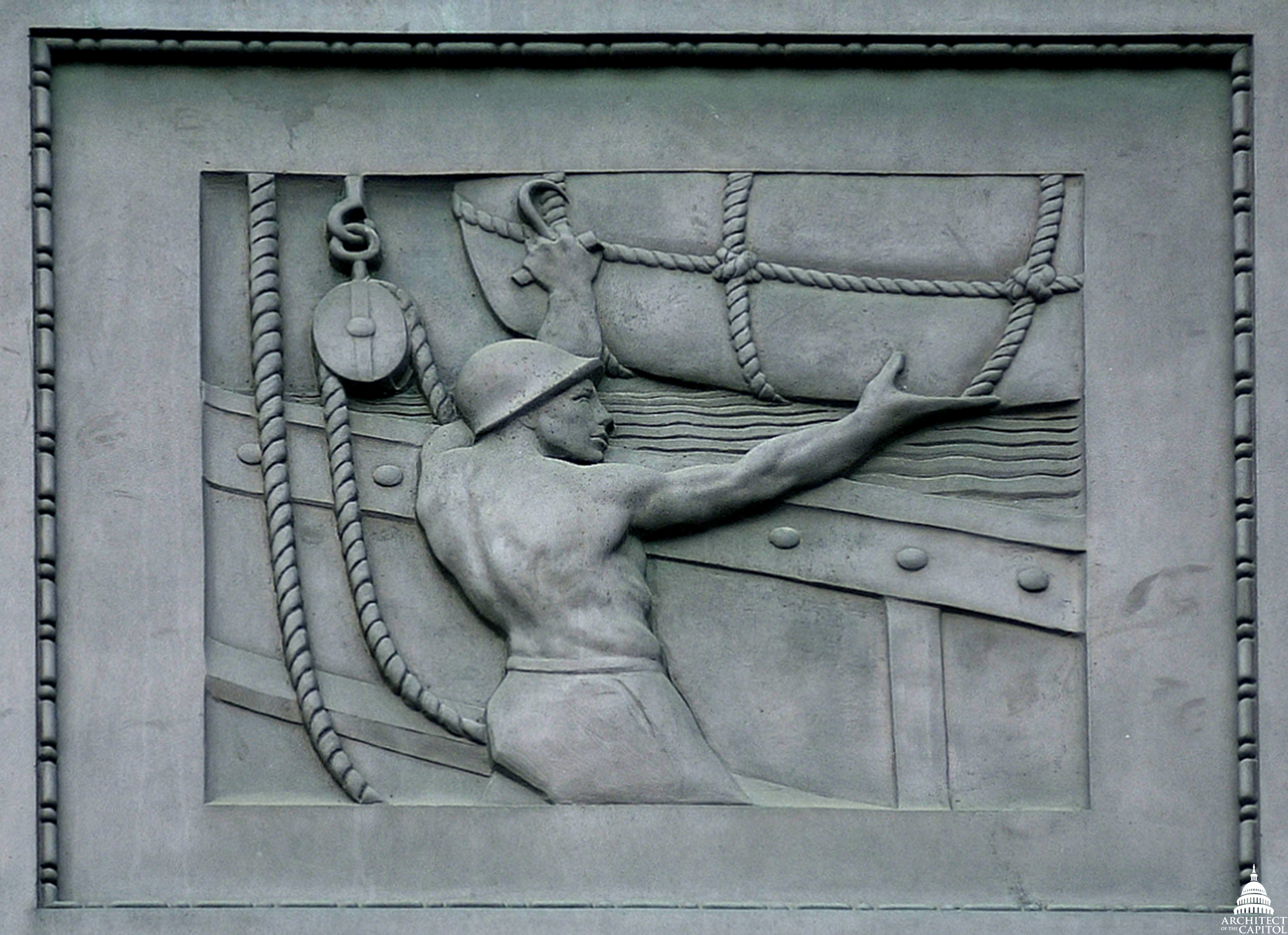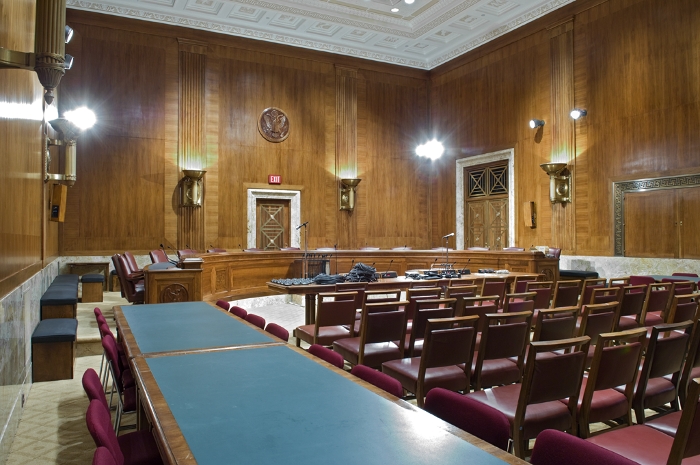

Dirksen Senate Office Building
Dirksen Senate Office Building
The Dirksen Senate Office Building was the second of three office buildings constructed for the United States Senate. Located northeast of the Capitol on a site bounded by Constitution Avenue, C Street, First Street, and Second Street N.E., it adjoins the later Hart Senate Office Building.
Northeast of the Capitol, adjoining the Hart Senate Office Building on a site bounded by Constitution Avenue, Second Street, First Street, and C Street, N.E.
Date Occupied: October 15, 1958
Area: 750,520 square feet
Due to the economic conditions of the 1950s the design of the Dirksen Senate Office Building was kept simple to keep costs down. It had to be a worthy neighbor of the Russell Senate Office Building and the Capitol, but expensive ornament or grand interiors were avoided. The principal architectural interest of the exterior lies on the First Street elevation, which is a five-part composition dominated by a central pavilion. The suggestion of a colonnade along this facade is handled by piers alternating between tall dark window columns. It is simple and effective, a nod to both the classical tradition and the modern aesthetic. What is surprising, however, is not to find the building's principal entrances in the central pavilion. These are instead located around the corners and enter into exceedingly simple and small lobbies.
Bronze medallion with an eagle on the exterior doors of the Dirksen Building.
The principal (First Street) elevation was designed with a pilastered central bay with an entablature and pediment. The bronze doors at the north and south entrances were designed by Otto R. Eggers and modeled by the Rochette and Parzini Corporation. In the center are the American Eagle and symbols representing Equality and Liberty.
Bronze reliefs of a sailor and a farmer.
Fifty-one bronze reliefs appear on the spandrels between the windows of the Dirksen Senate Office Building. These sculptured panels are part of the overall design of the building, created by the firm Eggers & Higgins. Five subjects are featured: shipping, farming, manufacturing, mining, and lumbering. Each is represented by a stylized male figure in action: a sailor maneuvers cargo; a farmer guides a plow; a factory worker oils gears; a miner swings a pick axe; and a lumberjack chops a tree. The figurative panels are 2"x 2" square. Believed to have been designed by Otto R. Eggers of Eggers and Higgins, they were modeled by Rochette & Parzini Corporation of New York and cast by The Flour City Ornamental Iron Company in Minnesota.
Most of the Dirksen Building's interior plan is devoted to hearing rooms and staff space in support of committee work. Each of the building's 12 committee rooms was designed with a rostrum and room for reporters and witnesses. The committee rooms are the building's finest interior features, designed with walnut paneled walls and imposing bronze lighting fixtures.
Other features incorporated into the building, which reflected the modern advances of the time, included an auditorium seating approximately 500 persons and equipped with radio, television, motion picture, recording and broadcasting facilities; a cafeteria seating seven hundred persons; a telephone exchange system; a parking garage for two hundred cars; and a fluorescent lighting system. The Senate's subway system was rebuilt in a new tunnel in order to serve both the Russell and Dirksen Buildings.
History and Construction
Before the 1940s, Senate staff positions were mostly clerical and custodial. President Franklin Roosevelt's New Deal and the response to the nation's entry into the Second World War fueled the growth and domination of the executive branch. As a result, congressional leaders became convinced of the need to greatly expand their staffs to include experts on a growing list of complex policy issues.
In 1941 the Senate Office Building Commission directed the Architect of the Capitol, David Lynn, to prepare preliminary plans and cost estimates for an additional office building. Soon after the war ended, Congress passed the Legislative Reorganization Act of 1946. This landmark statute allowed Congress to hire professional staffs at salaries equal to those employed by the executive branch. Each committee gained four professional and six clerical aides. The surge in numbers of new staff made a second building necessary – one intended primarily to accommodate committees. In 1948 the government acquired the city block east of the Russell Building and began planning a new Senate office building. The architectural firm of Eggars & Higgins, successor to the famous John Russell Pope practice, was hired to design the building. Their submitted plan called for a simple, seven-story "E"-shaped building faced in marble.
1956 photograph of the construction of the Dirksen Senate Office Building.
The final plans and specifications were approved by the Senate Office Building Commission in 1949, but construction was delayed until 1954. As a result of the delay and increasing costs, it became necessary to delete the entire interior center wing of the building. The latter was finally completed in 1982, as part of an entirely new building that was named the Hart Senate Office Building. The ground-breaking exercises for the Dirksen Building, named in 1972 for former Minority Leader Everett McKinley Dirksen, were held in January 1955, and the building was occupied in October 1958.










